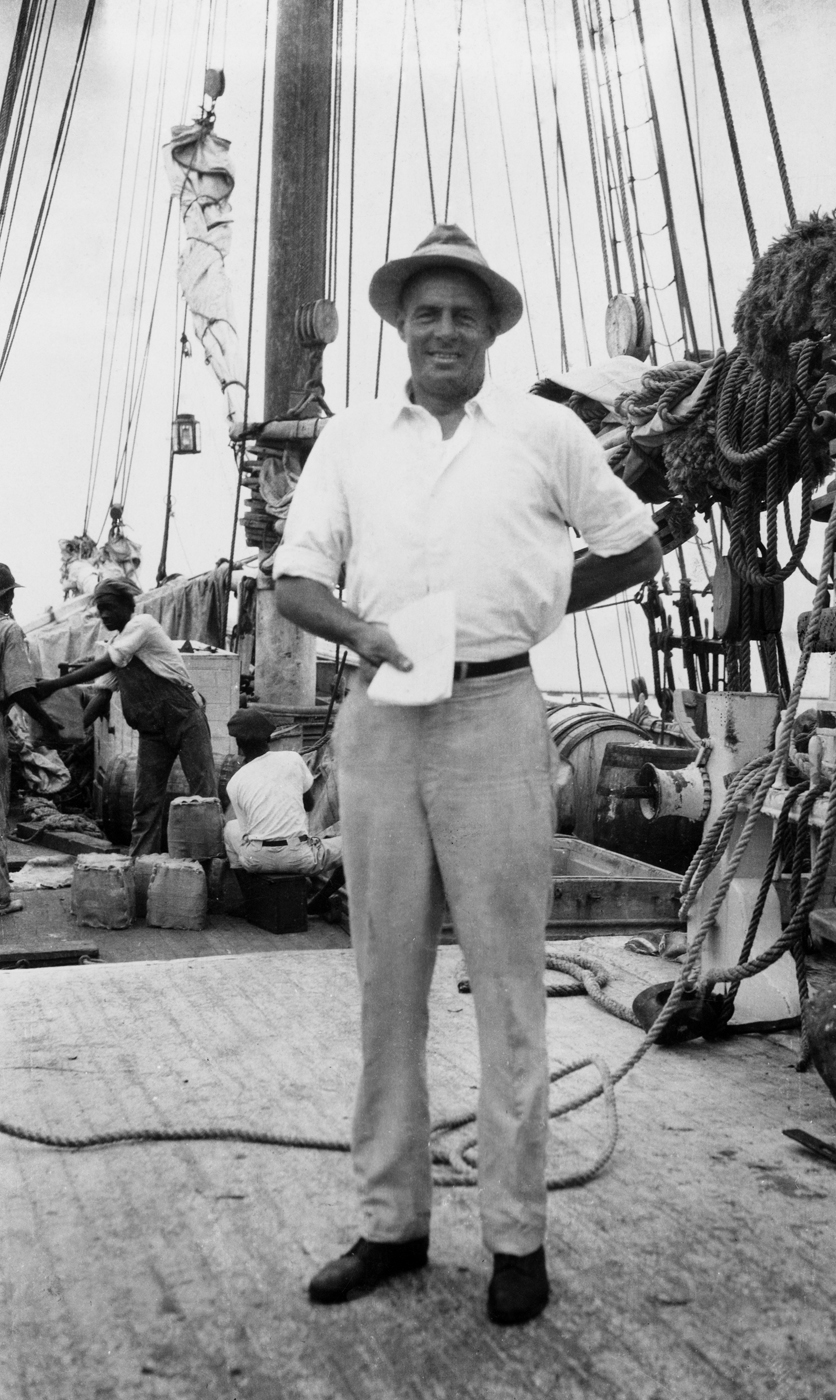As history shows, forbidden fruit is the sweetest. Here, I would like to present some notions, phenomena, and people connected with the illegal, underground activities which flourished during the time of Prohibition.
1. Home-made wine - An easy way to produce your own alcoholic beverage. Farmers, as a reward for supporting the idea of prohibition, were allowed to produce their own applejack or blueberry wine, though on the condition that it was a non-intoxicating fruit juice for home consumption only. In reality, the wine was sold as juice under such labels like "brick or blocks of Rhine Wine," or "blocks of port."
2. Rum-running & bootlegging - These terms describe the illegal transporting of alcoholic beverages. While the term rum-running is connected with smuggling alcohol over water, bootlegging is applied to smuggling over land. Among the smuggled items were most often Caribbean rum, Canadian whiskey, French champagne, and English gin.
Rum-runner, William S. McCoy, Florida
3. Speakeasy - Also called a blind pig or blind tiger, was a place where alcoholic beverages were sold illegally. The distinction between a blind pig and a speakeasy is based on the kind of visitors who attended these places. Speakeasies were usually higher-class establishments, while blind tigers offered alcohol to lower-classes. Speakeasies were usually located in cities, especially in New York and Chicago, but also in smaller towns.
4. Izzy Einstein & Moe Smith - Agents of the US Prohibition Unit who operated in New York in the period 1920-1925. They were extremely successful in shutting down illegal speakeasies. They used disguise in order to expose illegal establishments and their owners. The story of their lives is presented in a film "Izzy&Moe."
5. The Purple Gang - A criminal organization of bootleggers in the 1920s, also known as the Sugar House Gang. The mob operated mainly in Detroit, Michigan, due to the closeness to the Canadian border. Its leaders were Charlie Leiter and Abe Bernstein.
6. Boardwalk Empire - An American TV series set in Atlantic City, New Jersey, during the Prohibition era. Based on Nelson Johnson's book entitled Boardwalk Empire: The Birth, High Times, and Corruption in Atlantic City. Here you can watch the series:
The Prohibition era was over in 1933 after the ratification of the 21st Amendment which repealed the 18th Amendment.
What are you views on banning alcoholic beverages?
Did the 18th Amendment infringe the freedom of Americans?
How do you like the feminist approach to Prohibition presented in the photo above?
Maybe, you are familiar with the period of 20s and 30s in the US, and would like to share some information with other readers?
Express yourself!
Sources:



No comments:
Post a Comment